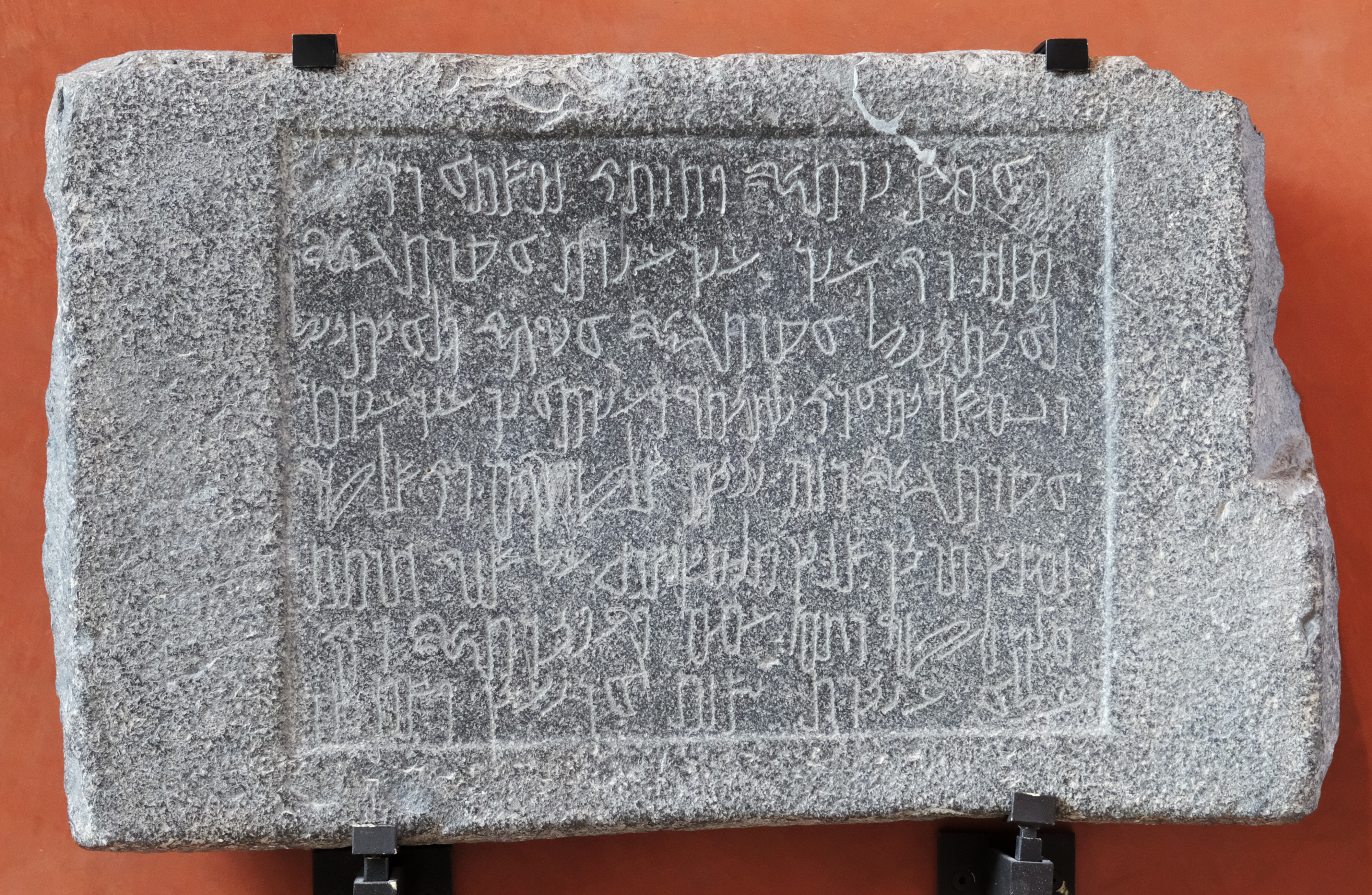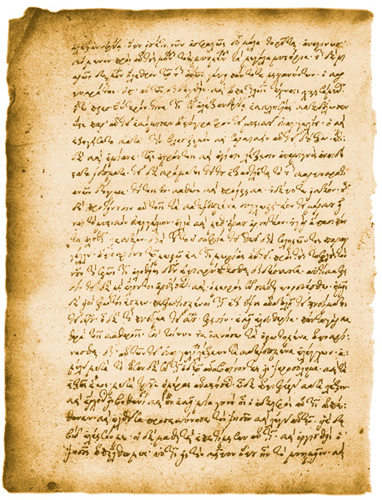|
Qos (deity)
Qos (Edomite: 𐤒𐤅𐤎 ''Qāws'', later ''Qôs''; Hebrew: ''Qōs'')Lévi Ngangura Manyanya. (2009)La fraternité de Jacob et d'Esaü (Gn 25-36): quel frère aîné pour Jacob?''Labor et Fides'', p.257. also Qaus ( akk, 𒋡𒍑 ''Qa-uš''), or Koze (Greek: Kωζαι ''Kōzai'') was the national god of the Edomites. He was the Idumean structural parallel to Yahweh. The name occurs only twice in the Old Testament (if a possible allusion in an otherwise corrupted text in the Book of Proverbs is excluded) in the Book of Ezra and Nehemiah as an element in a personal name, ''Barqos'' ("son of Qos", compare the Hebrew "Benaiah" meaning "son of Jah"), referring to the 'father' of a family or clan of perhaps Edomite/Idumaean ''nəṯīnīm'' or temple helpers returning from the Babylonian exile.E. A. Knauf. (1999). Qos nKarel van der Toorn, Bob Becking, Pieter Willem van der Horst ds.br>''Dictionary of Deities and Demons in the Bible'' pp.674-677. Wm. B. Eerdmans Publishing: “This ... [...More Info...] [...Related Items...] OR: [Wikipedia] [Google] [Baidu] |
Bow And Arrow
The bow and arrow is a ranged weapon system consisting of an elastic launching device (bow) and long-shafted projectiles ( arrows). Humans used bows and arrows for hunting and aggression long before recorded history, and the practice was common to many prehistoric cultures. They were important weapons of war from ancient history until the early modern period, where they were rendered increasingly obsolete by the development of the more powerful and accurate firearms. Today, bows and arrows are mostly used for hunting and sports. Archery is the art, practice, or skill of using bows to shoot arrows.Paterson ''Encyclopaedia of Archery'' p. 17 A person who shoots arrows with a bow is called a bowman or an archer. Someone who makes bows is known as a bowyer,Paterson ''Encyclopaedia of Archery'' p. 31 someone who makes arrows is a fletcher,Paterson ''Encyclopaedia of Archery'' p. 56 and someone who manufactures metal arrowheads is an arrowsmith.Paterson ''Encyclopaedia of Arche ... [...More Info...] [...Related Items...] OR: [Wikipedia] [Google] [Baidu] |
Theophoric
A theophoric name (from Greek language, Greek: , ''theophoros'', literally "bearing or carrying a god") embeds the word equivalent of 'god' or God's name in a person's name, reflecting something about the character of the person so named in relation to that deity. For example, names embedding Apollo, such as ''Apollonios'' or ''Apollodorus'', existed in Greek antiquity. Theophoric personal names, containing the name of a god in whose care the individual is entrusted (or a generic word for ''god''), were also exceedingly common in the ancient Near East and Mesopotamia. Some names of theophoric origin remain common today, such as Theodore (given name), Theodore (''theo-'', "god"; ''-dore'', origin of word compound in Greek: ''doron'', "gift"; hence "God's gift"; in Greek: ''Theodoros'') or less recognisably as Jonathan (name), Jonathan (from Hebrew language, Hebrew ''Yonatan/Yehonatan'', meaning "Yahweh has given"). Classical Greek and Roman theophoric names * Demetrius and its d ... [...More Info...] [...Related Items...] OR: [Wikipedia] [Google] [Baidu] |
Mamre
Mamre (; he, מַמְרֵא), full Hebrew name ''Elonei Mamre'' ("Oaks/Terebinths of Mamre"), refers to an ancient religious site originally focused on a single holy tree, growing "since time immemorial" at Hebron in Canaan.Niesiolowski-Spano (2016). It is known from the biblical story of Abraham and the three visitors . The tree under which he had pitched his tent is known as the oak or terebinth of Mamre. Modern scholars have identified three sites near Hebron which, in different historical periods, have been successively known as Mamre: Khirbet Nimra (a little excavated Persian and Hellenistic period site), Ramat el-Khalil (the best known site), and Khirbet es-Sibte. The last one contained an old oak tree identified by a relatively new tradition as the Oak of Mamre, which has collapsed in 2019, and is on the grounds of a Russian Orthodox monastery. Jewish-Roman historian Josephus, as well as Christian and Jewish sources from the Byzantine period, locate Mamre at the site lat ... [...More Info...] [...Related Items...] OR: [Wikipedia] [Google] [Baidu] |
Dushara
Dushara, (Nabataean Arabic: 𐢅𐢈𐢝𐢛𐢀 ''dwšrʾ'') also transliterated as Dusares, is a pre-Islamic Arabian god worshipped by the Nabataeans at Petra and Madain Saleh (of which city he was the patron). Safaitic inscriptions imply he was the son of Al-Lat, and that he assembled in the heavens with other gods. He is called "Dushara from Petra" in one inscription. Dushara was expected to bring justice if called by the correct ritual. Etymology Dushara is known first from epigraphic Nabataean sources who invariably spell the name ''dwsrʾ'', the Nabataean script denoting only consonants. He appears in Classical Greek sources Δουσάρης (''Dousárēs'') and in Latin as ''Dusares''. The original meaning is disputed, but early Muslim historian Ibn al-Kalbi in his "Book of Idols" explains the name as ''Dhū l-Šarā'' ( ar, ذو الشرى), meaning likely "The One from Shara", Shara being a mountain range south-east of the Dead Sea. If this interpretation is correct ... [...More Info...] [...Related Items...] OR: [Wikipedia] [Google] [Baidu] |
Khirbet Et-Tannur
Khirbet et-Tannur (Arabic: خربة التنور) is an ancient Nabataean temple situated on top of Jebel Tannur, in today's Jordan. Based on the cults statues iconography, whether the temple was dedicated to the fertility goddess Atargatis and Zeus-Hadad, or perhaps other gods of their own in that form is not yet certain. The only inscription which mentioned a deity was in reference to the Edomite god Qos, who was the equivalent of the Arab god Quzah, the god of the sky. History The remains of Khirbet et-Tannur consists only of the temple complex on isolated mountain top, which indicate a site solely functioning as a religious high place similar to those in other Nabataean regions. While no dating is established, the temple went through three different phases. The earliest phase of the temple is usually dated around 8-7 BC on the account of an inscription engraved on a small stone block. The final phase was dated by Glueck judging from the temple's sculptures and architectural ... [...More Info...] [...Related Items...] OR: [Wikipedia] [Google] [Baidu] |
Nabataean Aramaic
Nabataean Aramaic is the Aramaic variety used in inscriptions by the Nabataeans of the East Bank of the Jordan River, the Negev, and the Sinai Peninsula. Compared to other varieties of Aramaic, it is notable for the occurrence of a number of loanwords and grammatical borrowings from Arabic or other North Arabian languages.Butts, Aaron M"North Arabian Features in the Nabataean Aramaic Inscriptions from Madāʼin Ṣāliḥ: A Contact-Linguistic Analysis" in G.J. Brooke et al. (eds), ''Near Eastern and Arabian Essays: Studies in Honour of John F. Healey'' (Journal of Semitic Studies Supplement 41; Oxford: Oxford University Press), 39–57. Attested in several dozen longer dedicatory and funerary inscriptions and a few legal documents from the period of the Nabataean Kingdom, Nabataean Aramaic remained in use for several centuries after the kingdom's annexation by the Roman Empire in 106 AD. Over time, the distinctive Nabataean script was increasingly used to write texts in the Arab ... [...More Info...] [...Related Items...] OR: [Wikipedia] [Google] [Baidu] |
Cleopatra
Cleopatra VII Philopator ( grc-gre, Κλεοπάτρα Φιλοπάτωρ}, "Cleopatra the father-beloved"; 69 BC10 August 30 BC) was Queen of the Ptolemaic Kingdom of Egypt from 51 to 30 BC, and its last active ruler.She was also a diplomat, naval commander, linguist, and medical author; see and . A member of the Ptolemaic dynasty, she was a descendant of its founder Ptolemy I Soter, a Macedonian Greek general and companion of Alexander the Great. writes about Ptolemy I Soter: "The Ptolemaic dynasty, of which Cleopatra was the last representative, was founded at the end of the fourth century BC. The Ptolemies were not of Egyptian extraction, but stemmed from Ptolemy Soter, a Macedonian Greek in the entourage of Alexander the Great."For additional sources that describe the Ptolemaic dynasty as " Macedonian Greek", please see , , , and . Alternatively, describes them as a "Macedonian, Greek-speaking" dynasty. Other sources such as and describe the Ptolemies a ... [...More Info...] [...Related Items...] OR: [Wikipedia] [Google] [Baidu] |
Herod The Great
Herod I (; ; grc-gre, ; c. 72 – 4 or 1 BCE), also known as Herod the Great, was a Roman Jewish client king of Judea, referred to as the Herodian kingdom. He is known for his colossal building projects throughout Judea, including his renovation of the Second Temple in Jerusalem and the expansion of the Temple Mount towards its north, the enclosure around the Cave of the Patriarchs in Hebron, the construction of the port at Caesarea Maritima, the fortress at Masada, and Herodium. Vital details of his life are recorded in the works of the 1st century CE Roman–Jewish historian Josephus. Herod also appears in the Christian Gospel of Matthew as the ruler of Judea who orders the Massacre of the Innocents at the time of the birth of Jesus, although most Herod biographers do not believe that this event occurred. Despite his successes, including singlehandedly forging a new aristocracy from practically nothing, he has still been criticised by various historians. His reign pola ... [...More Info...] [...Related Items...] OR: [Wikipedia] [Google] [Baidu] |
Costobarus
Costobarus (Greek: Κοστόβαρος) was an associate of Herod the Great (who made Costobarus governor of Idumea) and second husband of Herod's sister Salome I. He was also known as Costobar.{{cite book, last1=Flavius, first1=Josephus (93 CE), last2=Marcus, first2=Ralph ranslatorlast3=Wikgren, first3=Allen ranslatortitle=Jewish Antiquities., date=1990, publisher=Harvard University Press, location=Cambridge, Massachusetts, isbn=0-674-99451-5, edition=Loeb Classical Library Another member of the Herodian dynasty was Costobar, who was the brother of Saul. Both Saul and Costobar were likely grandsons of Costobarus. Costobar(us), husband of Salome Costobarus was an associate of Herod during the latter’s rise to power. Following the capitulation of Jerusalem in 37 BC during the campaign by Mark Antony and Herod against the Hasmonean king Antigonus II - Costobar controlled the exits from the city.Josephus “Antiquities” xv: 260-266 Around this time, Antony appointed Herod a ... [...More Info...] [...Related Items...] OR: [Wikipedia] [Google] [Baidu] |
Morton Smith
Morton Smith (May 28, 1915 – July 11, 1991)Neusner, Jacob, ''Christianity, Judaism, and other Greco-Roman Cults. Part 1: New Testament'', ed. J. Neusner, ''Studies for Morton Smith at Sixty, vol 1, New Testament'' (Leiden: E.J. Brill, 1975), p. ix.Calder III, William M. “Smith, Morton”, in ''Biographical Dictionary of North American Classicists'', Ward W. Briggs, Jr., (ed.) (Westport, CT: Greenwood Press, 1994), p. 600. was an American professor of ancient history at Columbia University. He is best known for his reported discovery of the Mar Saba letter, a letter attributed to Clement of Alexandria containing excerpts from a Secret Gospel of Mark, during a visit to the monastery at Mar Saba in 1958. This letter fragment has had many names, from ''The Secret Gospel'' through ''The Mar Saba Fragment'' and the ''Theodoros''. Biography Smith was born in Philadelphia on May 28, 1915. He received his bachelor's degrees from Harvard College and the Harvard Divinity School, a Ph.D. ... [...More Info...] [...Related Items...] OR: [Wikipedia] [Google] [Baidu] |

.jpg)





